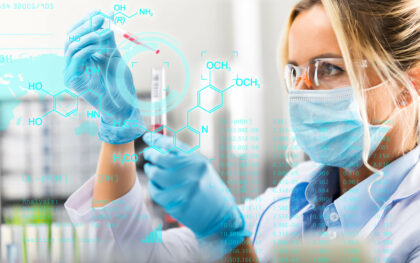Image analysis
Overall Course Objectives
In recent years, there has been an explosion in the use of image analysis for self-driving cars, climate change monitoring, advanced diagnostics, treatment planning, face tracking and a wide variety of other applications. The objective of the course is to introduce image analysis including topics within medical image analysis.
This course will give the student a solid understanding of digital images. Their nature, where they come from and which tools and techniques that can be used to extract information from them. After the course, the participant will be able to combine, implement, use and evaluate the performance of basic image analysis systems.
See course description in Danish
Learning Objectives
- Explain the fundamental properties of digital images including medical images .
- Describe principles for image acquisition including the pin hole camera and medical modalities like x-ray, computed tomography and magnetic resonance imaging.
- Perform feature-based image classification using support vector machines, random forests and k-nearest neighbor approaches.
- Implement and apply image analysis algorithms, including point processing, filtering, morphology, BLOB analysis, pixel classification, geometrical transforms, registration, classification, boundary tracing, line detection and segmentation.
- Implement and use statistical methods like principal component analysis for processing images and extraction of significant information from images. Implement and test generative image models based on principal component analysis. Describe and use shape and appearance models based on principal component analysis.
- Implement and apply change detection algorithms for video processing..
- Apply and evaluate feature-based classification using linear discriminant analysis.
- Use and evaluate state-of-the-art methods for 3D medical image registration.
- Design an appropriate image analysis algorithm based on a set of example images and a given objective.
- Compute the performance of a given image analysis algorithm given a ground-truth data set.
- Improve and optimize image algorithms based on ground truth data or clinical end-points.
- Select appropriate training data and do feature selection for image based and pixelwise classification algorithms.
Course Content
Digital image and data structures, the pin hole camera, medical modalities, image file formats, point processing, filtering, morphology, BLOB analysis, classification, labelling and object analysis, pixel classification, segmentation, geometrical transforms, registration, boundary tracing, line detection, principal component analysis, linear discriminant analysis, video change detection, shape analysis, confusion matrices, and performance metrics.
Possible start times
- 6 – 20 (Tues 8-12)
Recommended prerequisites
Basic knowledge of probability theory or statistics. Basic course in linear algebra. Basic programming experience in for example Matlab, Python, C, C#, C++ or Java.
Teaching Method
Lectures and computer exercises.






